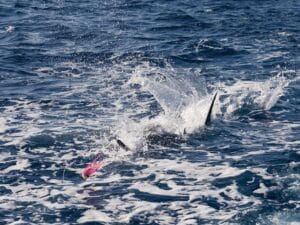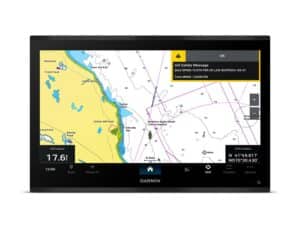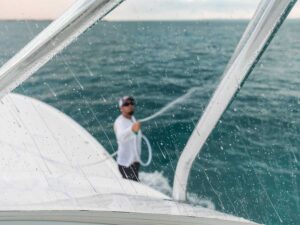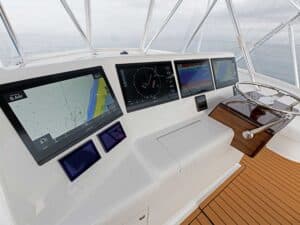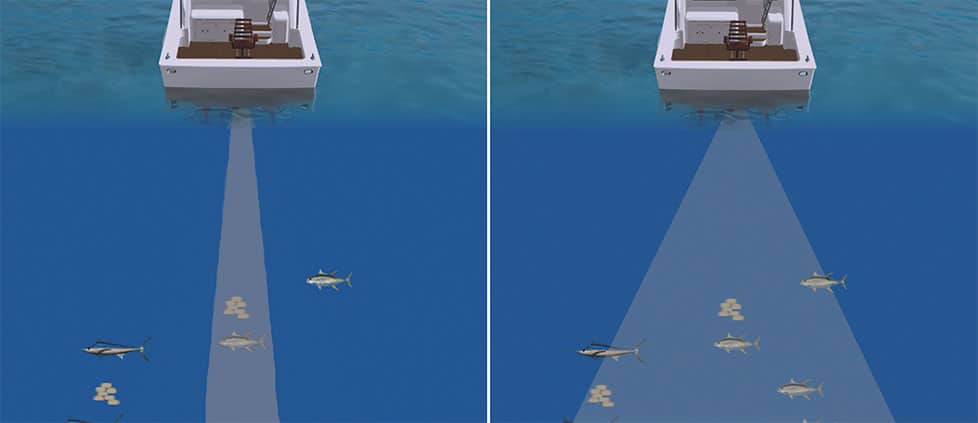
Here’s a number you might not believe: 30. That’s the number of chirp transducers offered by Airmar, the single largest maker of sonar transducers for recreational marine use. While Airmar was once the only manufacturer of transducers, now many sonar-system makers like Raymarine, Simrad and Garmin are making their own, too. But what’s the best transducer for saltwater? Let’s first take a look at our options.
Here’s another number: Infinity. Apparently that’s the number of chirp transducer transmit/receive frequencies available. But one is the only number you care about — as in which one of many, many transducers you need.
According to Dave Dunn, director of marine sales at Garmin International, there are some fairly simple ways to narrow down your choices for the best chirp transducer in this changing marketplace. And chirp is still a developing technology. “It’s like 4K TV,” Dunn says. “When it’s new, everybody likes it, and then it becomes the standard.”
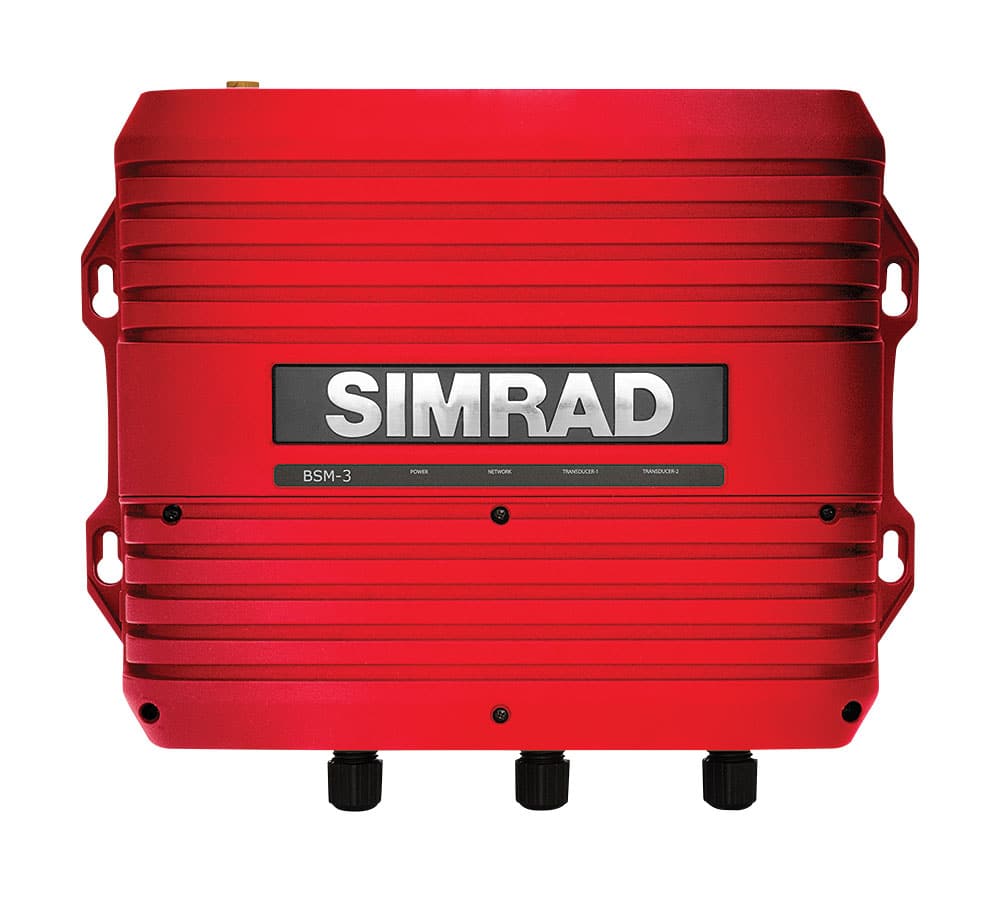
But given the track record of electronic offerings in the marketplace, something newer and cooler always comes along right behind it. While it may look like marine electronics makers have hit the high-water mark for sonar, we wouldn’t bet against them for bringing out something newer and better. For now, though, the equipment is so good, we can’t imagine better. The dilemma is still choosing a the best chirp transducer for your needs.
Buying a Chirp Transducer
So where do you start when selecting a transducer? “Begin with the chirp sonar unit you are buying,” Dunn advises. “Some systems will dictate a particular frequency. However, some, like Garmin’s GSD 26, allow any frequency transducer you want.”
Other black-box solutions, like Simrad’s BSM-3, will also allow the use of any frequency. Both products allow anglers to choose dual-range transducers that have a high-, low- or medium-depth range and offer a choice of using two bands. Powerful 3-kW transmitters make them even more flexible.
On the other hand, chirp systems integrated into a display often force your hand. The chirp sonar in Simrad’s NSS evo2 can focus on one frequency and transmit at lower power, to 600 watts. Even so, it’s a terrific value, offering far more visibility below the surface than was ever available with the best 50/200-kHz systems.
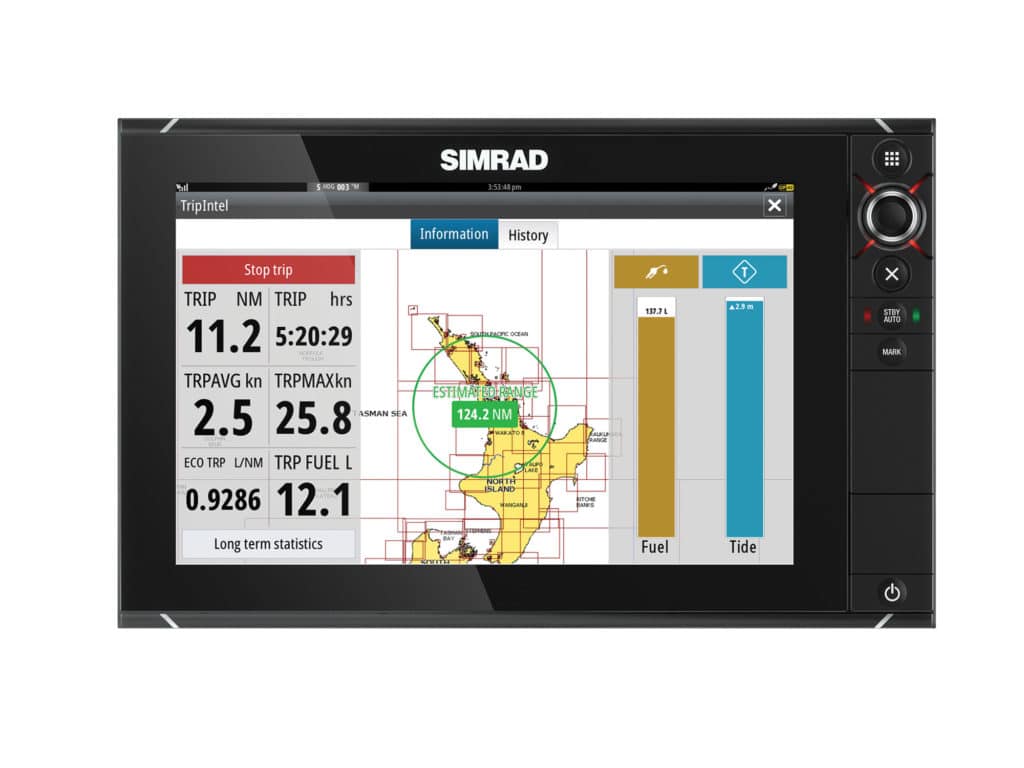
To get a retailer’s perspective, we spoke to Brian Rock of The GPS Store. They are a major retailer of all brands of sonars and transducers. Rock’s experience and knowledge quickly becomes evident in his fast and confident delivery of product and options information.
“You won’t get the depth using a low-frequency transducer with less than 1,000 watts,” Rock says, speaking of the integrated sonar systems. “You have to go to a black box to get that power.” With an integrated sonar like the NSS evo2, “You would want to choose a medium-frequency range transducer,” he explains. “It gives you the best compromise of high and low frequencies.”
A medium-frequency chirp transducer maximizes the lower wattage, too, and while it won’t spot the Titanic, it will give a clear picture of the deepest range at which you’ll be hunting fish.
Rock usually advises his customers to choose a high- and low-frequency range when a dual- or multiple-range black box allows it. But why would one choose a low-range frequency as one of two bands when fish are normally in the top 1,000 feet?
Once again, the choice comes from the black box. A 1,000-watt system won’t consistently grab the bottom over a few thousand feet, though some premium installations have seen solid bottom tracking in over 10,000 feet. But a 3-kW system will give bottom lock at speed and give the best, clearest coverage of the water column from the surface to 1,000 or so feet, giving a good look at the fish.
We previously reported that some anglers were turning sour on chirp because it was harder to track the more detailed resolution of the many schooling baitfish or game-fish targets than in old-school sonar with the bold, bright marks they painted. As we reported, one solution to that is firmware upgrades that embolden these targets, giving skippers more of the signal they could see most easily in their old equipment.
Another way Airmar has combated that negative is to create wide-beam sonar. The original chirp beam was 10 degrees or less. But Airmar saw the need for a wider beam reaching out 25 degrees. It gave a bolder target, and its wide beam marked fish completely bypassed by the pencil-thin ping. But wide-beam transducers aren’t flying off the shelf.
“One in 10 customers we sell to goes with a wide beam,” says Rock. “A lot of people don’t really understand the importance of it yet. It’s also more money for a wide beam. On a 1,000-watt transducer, it’s about $400 more.” But for a marlin skipper rigging his boat to bring home the gold, who’s probably investing upward of $10,000 in his electronics suite, that’s probably a false sense of economy.
So what’s the next box on the decision-making flowchart? Where to install your chirp transducer. Without hesitation, Rock says choose the transducer that fits your boat and the way you use it.
Certainly there are many transducer options, but once you’ve defined your preferred operating depth, your systems capabilities and where you want the transducer, the best options quickly rise to the top — which is exactly what we want the fish to do!
For more on this topic, see our list of Airmar’s most popular chirp transducers.
